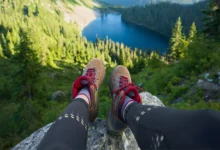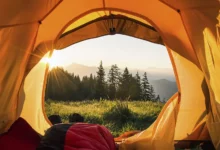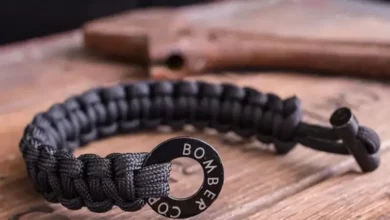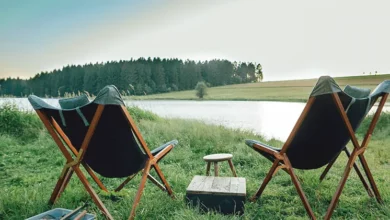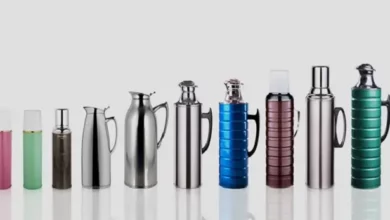Backpack buying guide
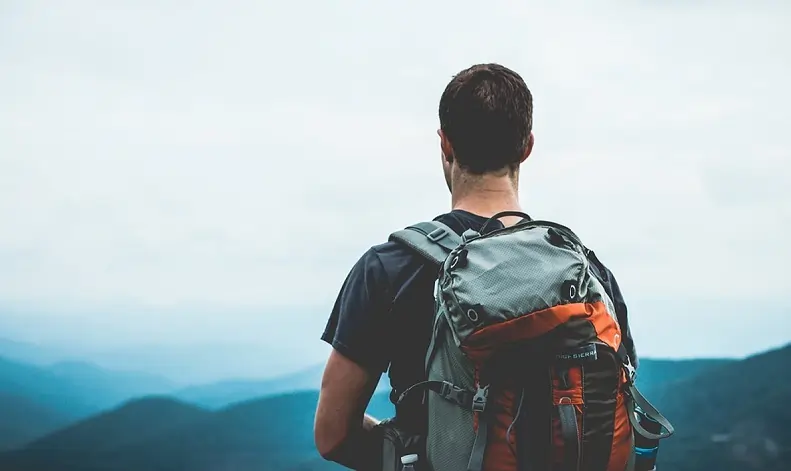
Choosing and buying a suitable backpack means having the second most important tool in the list of travel equipment after selecting the right shoes. The bag should be chosen according to the type of your trip.
If you ask people who have experienced various trips about the most essential travel tools, they will answer, “After a good shoe, you should buy a good backpack.” The importance of buying a backpack is so great that it can even directly affect the quality of your trip. The following will provide essential points for purchasing a travel bag. Join Nabtrip magazine.
The importance of a backpack
A backpack is one of the most essential travel equipment for people always on the go. So that it can directly affect the quality of your trip, suppose you go on a several-day trip in the heart of nature, and part of this trip is walking through the forest. Can you take all the action and enjoy your journey for a whole day?
Naturally, such a trip is complete when you put everything you need in a standard backpack and carry it on your back; Without feeling that something is weighing on your shoulders. Of course, we don’t mean that you will never feel the weight of your backpack, but we mean that your travel experience will be much more enjoyable with a good bag.
Types of backpacks
Backpacks are designed and produced in different types according to the kind and travel plan, which you should pay attention to when buying.
Hiking backpack
A backpack designed for a hiking program usually has many pockets to use the supplies you need without unzipping the bag. For example, net pockets for water bottles or fruit containers are considered on the sides of the pack.
mounting backpack
The backpack is designed to carry cargo over a long distance and time. These bags have a more elongated appearance and fewer pockets. Sometimes, an additional and separate pocket from the backpack’s main body is designed in the upper part, suitable for snacks, a windbreaker, or even a survival kit. Straps on the body of these bags are designed for carrying ski sticks, ice axes, batons, and crampons.
Backpack
These backpacks usually have an all-around zipper that opens the bag like a suitcase. In this case, you can open your bag like a suitcase and remove or put what you need without disturbing the order. Unlike hiking backpacks, this backpack is unsuitable for long-term hiking because it is not designed according to people’s bones.
Rock climbing backpack
The rock climbing backpack has a slim body. It should be narrower than the width of the rock climber’s upper body so that his hands have freedom of action during rock climbing.
Caving and canyoning backpack
Backpacks for caving and canyoning should be of a material resistant to abrasion, cutting, tearing, and getting wet. Also, several holes are installed in its body, allowing water to escape inside the bag.
Cycling bag
A cycling backpack should fit perfectly on the cyclist’s body and not limit his range of motion. This bag should have channels for ventilation and air release because the cyclist’s body sweats a lot during exercise. It should also be waterproof, and its pockets should be easy to access.
Assault pack or summit pack
A backpack is a small backpack used by mountaineers on long climbs. These people climb up to a certain height to camp near the peak and make their final ascent the following day after a complete rest. Climbers do not need to carry all their equipment for the final climb. For this reason, they put water, hot drinks, snacks, and warm clothes in their backpacks, and after climbing, they return to their camp to rest. This bag should be light in weight, so you don’t need to spend a lot to buy it.
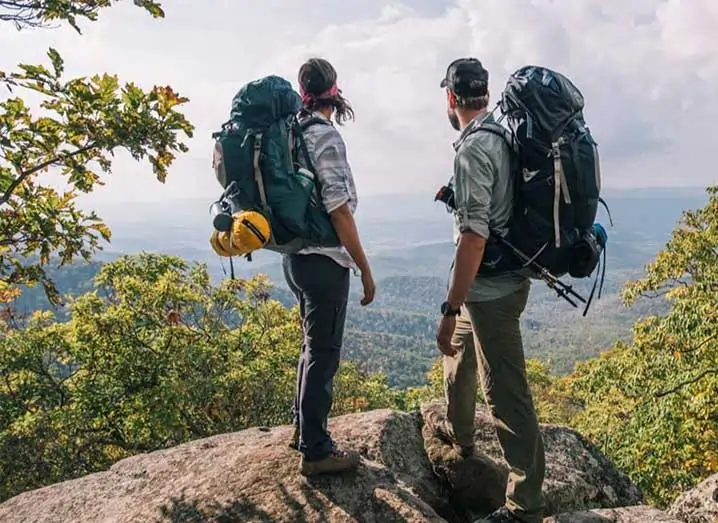
Backpack size and volume
The unit of measurement of the bag is based on liters; That is, the size of the bag is taken into account. You can choose the right backpack based on the type of trip, travel season, and number of days.
It would be best to consider how many days you will spend on the trip, what equipment you will bring, whether you will be camping overnight or have accommodation arranged for you. Will you take your sleeping bag and a tent or spend the night in an ecolodge with complete sleeping and resting equipment? Are you responsible for cooking on the trip and need cooking lights and cooking tools, or is the food provided by the program leader? Are you traveling in winter, and should you have warm clothes for this season, such as fleece, Goretex, and down clothing, or will your trip be in summer?
All these things affect choosing the size of the bag you carry.
For trips of one to three days, you can use 30-50 liter backpacks: this volume is enough for a light sleeping bag, food, and clothing for three days; But if your trip lasts more than three days to a week, you should choose a backpack that can fit more clothes, more food, and even your tent. A 50-80 liter backpack is enough for such a trip.
If you intend to be outdoors in nature and need to take camping equipment with you, then you should choose backpacks with a volume of more than 70 liters to have enough space for your equipment.
Travelers sometimes have at least two bags—one for travel equipment and one for necessary supplies.
The weight of the load in the backpack
In addition to the size of the backpack, paying attention to the weight of the load is also very important when buying a bag. Maybe you haven’t paid any attention to this issue until now, But this issue is considered a crucial point in choosing a backpack.
Backpacks with the same volume can be designed to carry different weights. The manufacturer announces the maximum weight that the bag can bear. The specified maximum weight does not mean that if we put more weight inside the bag, the bag will tear and cannot withstand it; Rather, it means that the person will no longer have that comfortable feeling, and the backpack system will not be able to transfer the weight of the body properly.
In addition to the volume of the items, you must also calculate or estimate their weight to choose a more suitable bag; For example, if the importance of your luggage does not exceed 70 liters and its weight does not exceed about 20 kg, you can save money by choosing the right backpack. Because you carry a lighter load, you can take less luggage. Use less energy and have more fun.
So if you see two backpacks with the same brands, the same volumes but different weights, the lighter weight of the backpack is not proof of superior technology. Instead, the more lightweight load is likely designed to carry less weight. You must be meticulous and read the information on the bags carefully.
What points should we pay attention to when buying a backpack?
A suitable backpack for travel should be durable, functional, and ideal for the type of travel and body structure. Still, observing the following points in choosing a proper backpack is necessary.
Buy a waterproof backpack.
When you pack your travel essentials, your backpack doesn’t have to be 100% waterproof. Just be sure that your bag is made of materials that are resistant to water and protect your belongings from getting wet when it rains; Although for almost all types of bags, waterproof covers with different colors and low prices can be found in abundance in the market.
Using these covers, in addition to being waterproof, has another advantage, and that is choosing the color based on the type of travel; For example, if your trip is to snowy areas, it is better to choose your cover from warm colors so that you can be identified by other team members or fellow travelers if you get lost or stray from the group. If your trip is to visit wildlife areas, the color of the cover should be compatible with nature so that it does not irritate the animals or make them feel scared.
To ensure the bag is waterproof, pour some water, wait a while, and see if it penetrates your bag.
Choose a backpack with a zipper.
Make sure each backpack compartment has two zippers to lock them together. Locking your backpack will make you feel at ease because no one will check your stuff at the baggage check at the airport.
Buy a backpack with pockets.
A good backpack should have different pockets and compartments. Some bags even have hidden pockets. In this way, things can be divided into small parts and placed in various pockets and compartments; For example, put clean clothes in a separate section. Put dirty clothes and shoes separately in a plastic bag and put them in another room. Put toiletries and cosmetics in another room, and the same for ID cards, credit cards, and money. This will prevent you from spilling out the entire contents of your bag when you need a device.
Buy a backpack with an internal frame.
All backpacks have either an internal frame or an external frame. Of course, the outer edge is mainly seen in old backpack models. The frame’s presence, made of compressed plastic in today’s models, helps your bag to take an upright shape. It is unlikely that you will find a backpack these days with a frame outside the main body, But preferably, buy a bag that has an internal structure.
Have a hip belt.
Most of the weight you carry in your backpack is concentrated on the lower part of the body, especially the pelvis, so buying a bag with a hip belt is better to put less pressure on your body. This belt helps distribute excess weight and reduces stress on the spine. Also, the pelvic strap is adjustable and can be fixed on the upper part of the pelvis.
Have special shoulder straps
The presence of unique shoulder straps helps reduce the burden on your shoulders. These adjustable straps allow the bag to fit appropriately on your shoulders.
Choose backpacks with a curved back.
Backpacks with a curve that fits the waist shape make it easier to carry and distribute the weight evenly. Using the waist curve to create a bag is like the rule of making curved chairs. These backpacks have a natural arch and will not cause back pain. In addition, the curvature of the bag creates a tiny space between the back and the bag, allowing air to pass through. This prevents sweating.
Backpack size
Be careful in choosing a backpack that fits your physical structure. If your bag is too small or too big, the weight will not be evenly distributed, and this can cause back pain or even imbalance while moving.
The size of the backpack should also be proportional to your height. If the height of the bag is short for you, the pressure of the ‘s weight bag will be more on the middle part of the back, which will cause pain in the central part of the back for a long time.
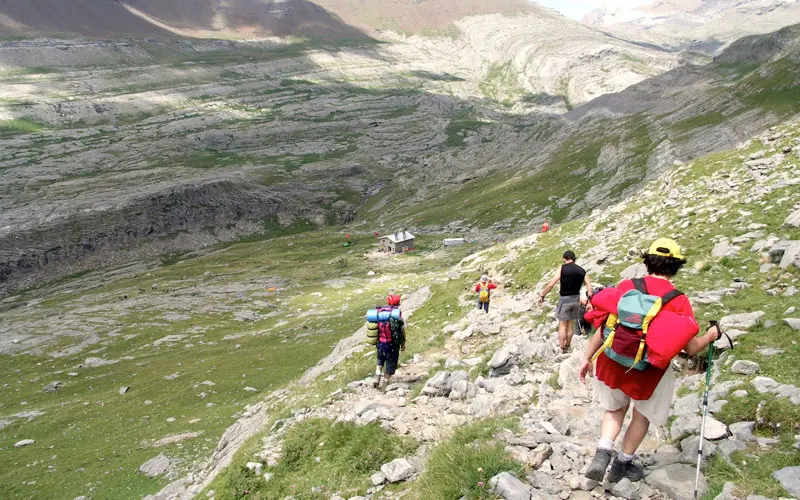
Choosing a backpack based on gender
Backpacks are divided into women’s and men’s backpacks based on the difference in the physical structure of women and men. Women’s bags are generally called ladies, females, and women, and men’s bags are usually called male.
This difference is based on the smaller bones of women compared to men and the difference in the lower body. Women have finer bones and smaller shoulders, so their backpacks should fit comfortably over the pelvis.
In some brands, even the color of the bag is different for men and women. For example, a bag from the same brand may be designed in red for women and blue for men.
Reliable companies producing backpacks
Many companies in the world produce backpacks and other camping equipment. Some companies like REI, EMS, Deuter, Millet, and Low Alpine have excellent and specialized loads. They do. But we recommend paying more attention to everything mentioned before buying a travel bag.
How to adjust the backpack on the body
After choosing the right backpack, it’s time to adjust it to your body. Before doing anything, first, fill your bag with 7 to 10 kg. Note that when lifting a load, bend the knees instead of the waist, and apply this principle to lifting all objects, weighty objects.
- First, loosen all the straps of the backpack and place it on your shoulders so that it fits properly on your shoulders.
- Pay attention to the back of the neck, where the shoulder straps connect to the back of the backpack. This part should be between your shoulder blades. If its place is incorrect, this part is adjustable for your bag; you must adjust it to fit between the shoulders. Of course, this part can only be changed for backpacks with a volume of 50 liters and above, and there is no need to adapt this part for light loads.
- Put the backpack on your shoulders, and raise the shoulders so the bag is higher.
- Place the backpack belt on your hip bone and fasten it. You have to pull the belt straps from both sides simultaneously so that the belt is on the hip bone.
- In big backpacks, there is a strap called a backpack strap. This strap is placed on the mountaineer’s shoulder from the top of the pack at an angle of 45 degrees. When carrying a heavy backpack, you can keep the backpack closer to your body by pulling these two straps, and this position of the body helps to bear the weight of the pack. This strap may not be present in small bags.
- Pull the shoulder straps down at this stage so the bag is close to you and fixed on your shoulders. When the backpack’s weight is high, you can pull the shoulder straps simultaneously to bring the load closer to your body, making it easier to bear.
- The last step is to tie the chest strap. This strap should not be too tight to prevent you from breathing.
How to take care of your backpack?
Backpack care is so vital that it can keep a backpack usable for you for years. The following tips will help you take care of your backpack and experience more trips.
- Do not carry glass containers in your backpack. Because their weight is heavy, it is possible to break the container, tear your bag, and even injure you.
- When transporting petroleum, oily and leaky materials, be careful that they are well packed so that it does not contaminate your bag and belongings.
- In sports such as rock climbing, ensure that when supporting or carrying the bag with a rope from the wall, the string or carabiner must be passed through one of the shoulder straps and the support ring of the bag, not just the support strap.
- When resting, put your backpack in a position where the back of the pack, which is the part that is in contact with your body and is wet due to sweating, is exposed to the sun and wind to dry.
- If your backpack gets dirty, wash it with lukewarm water and soap and avoid direct heat. Avoid scrubbing the bag with chemicals such as powders and grabbing and throwing it in the washing machine because its waterproof layer will disappear after a while.
- Getting a cover for your backpack is better, so you don’t need to wash it when it gets dirty. Also, this cover protects the gear and equipment from getting wet.
- After the trip, empty your bag of dirty containers or food waste, wet and muddy clothes.
- If you see a tear in your backpack, repair it immediately.
- Sometimes, during long trips, we have to put our backpacks in the trunk of buses or boxes, and we will face the problem of the bag getting dirty, wet, or torn. It is better to prepare a bag to protect the backpack.

